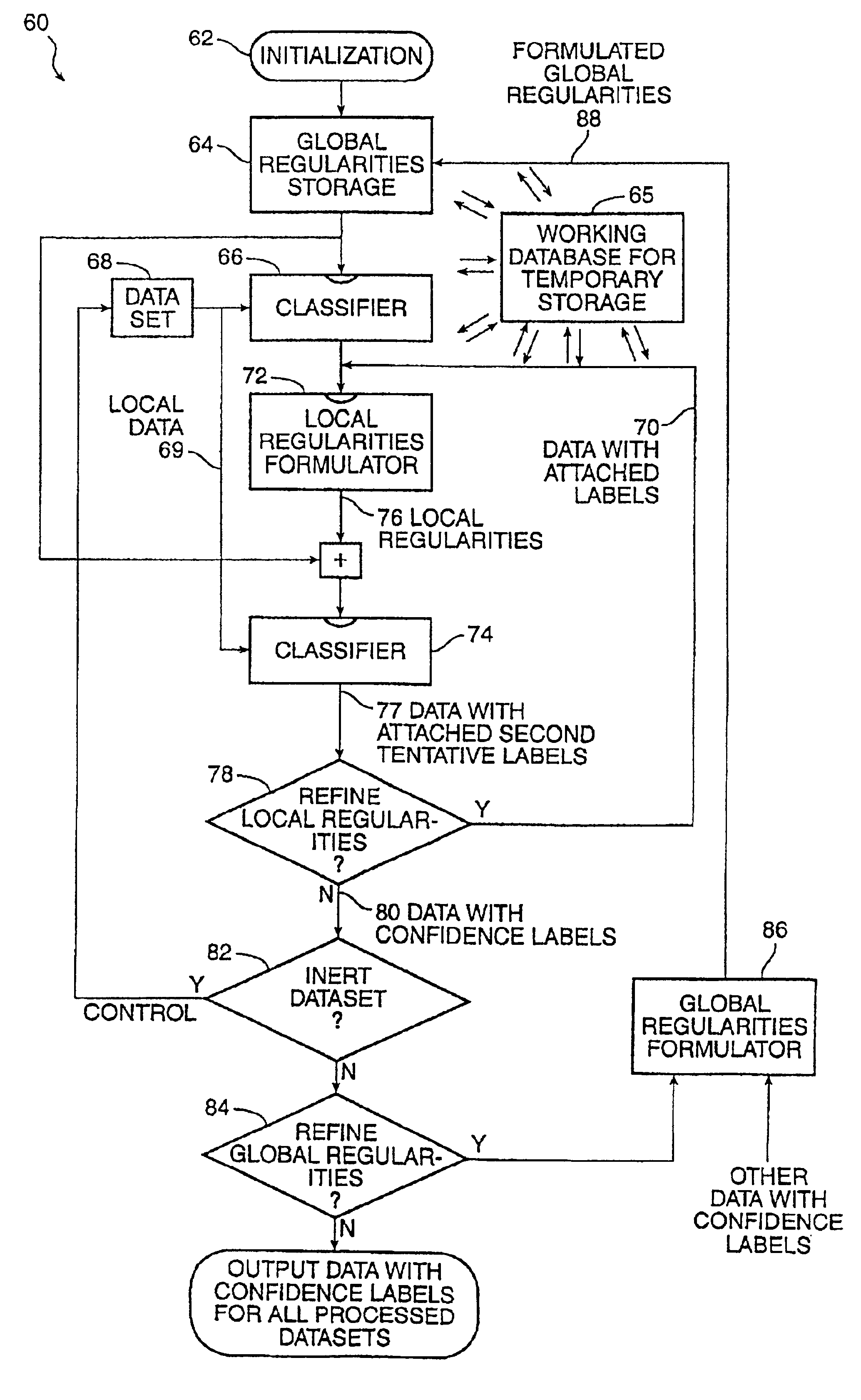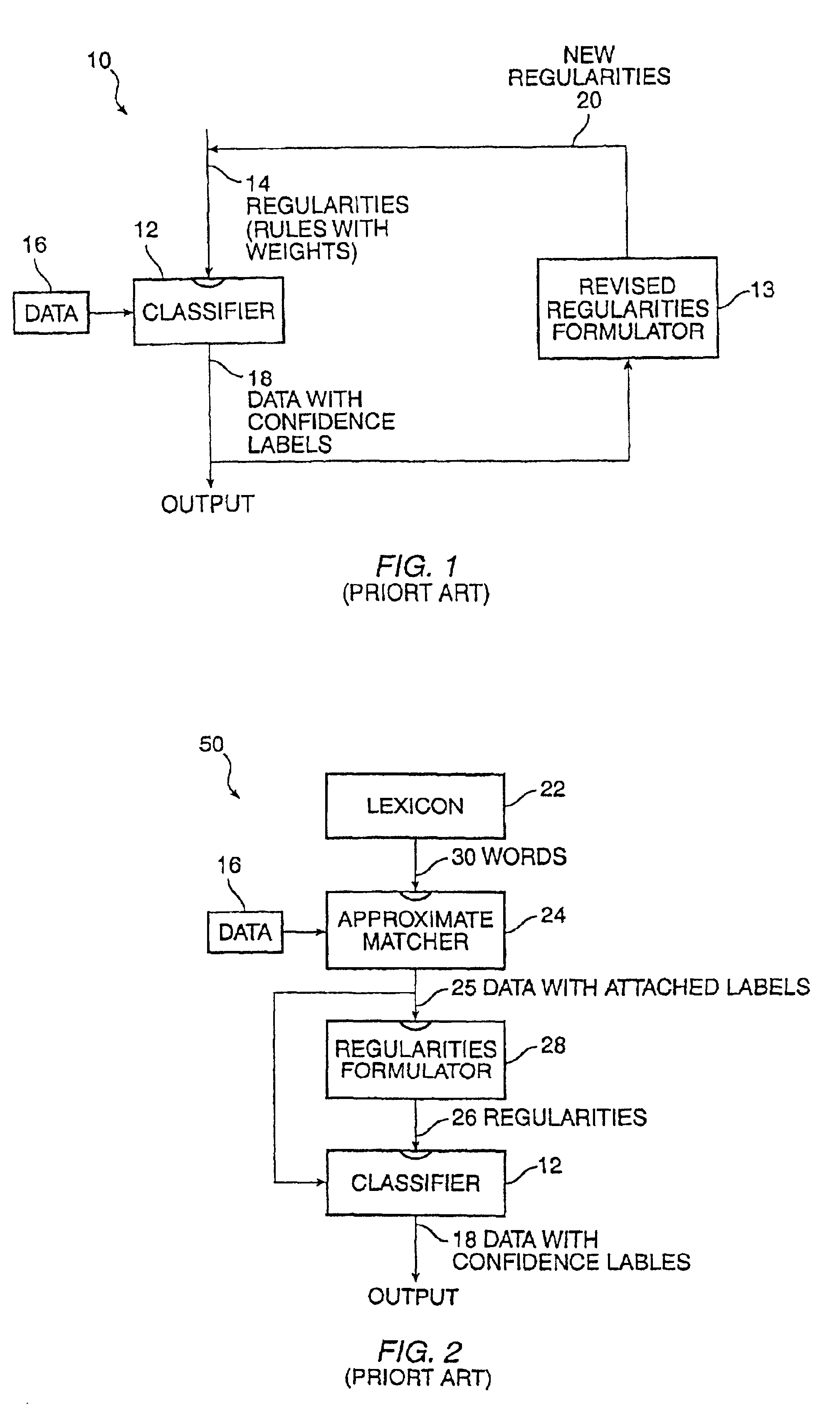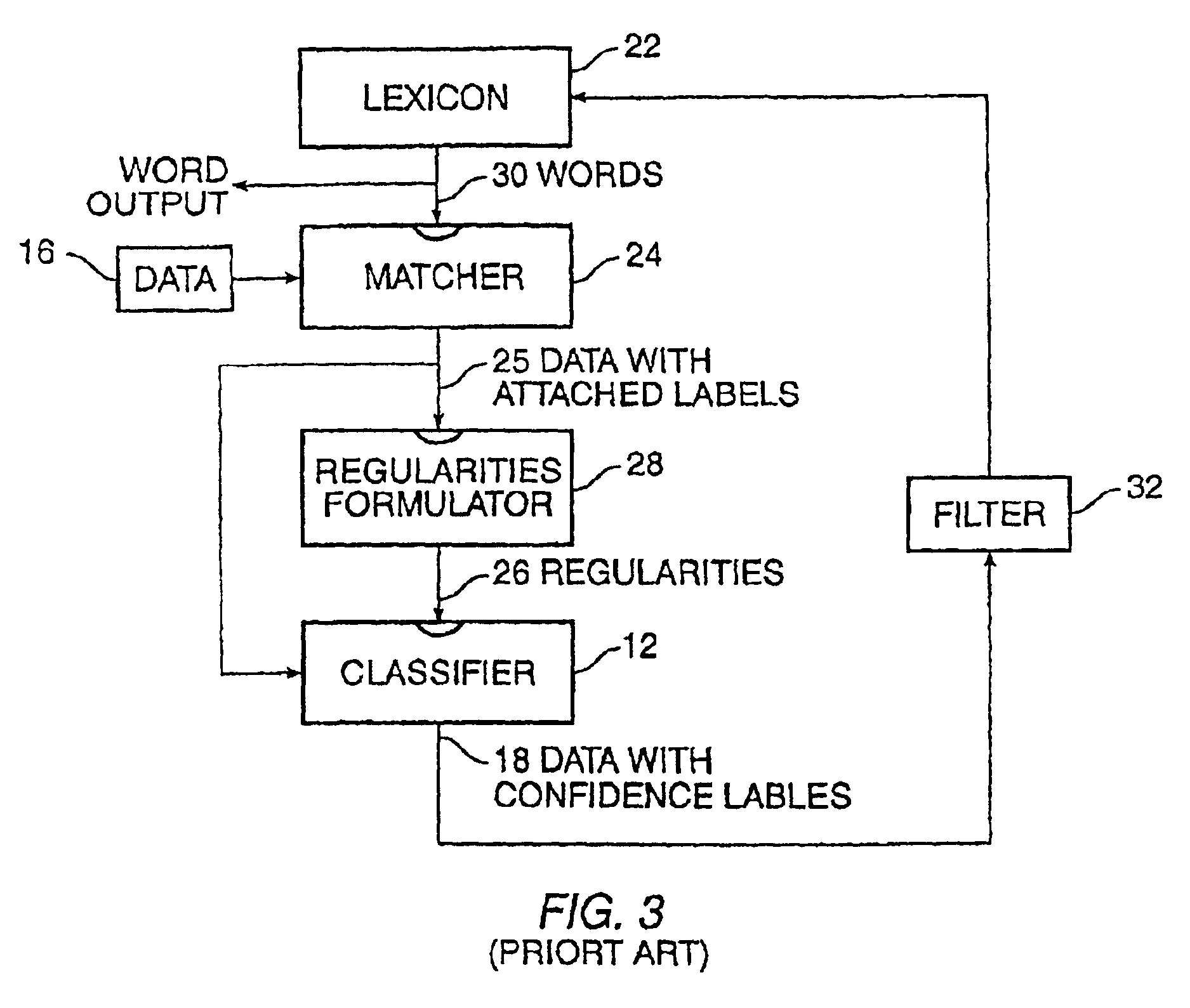Method for learning and combining global and local regularities for information extraction and classification
a global and local regularity and information extraction technology, applied in the field of information extraction, can solve the problems of insufficient matching accuracy of lexical-based approximate matching, difficult parameter estimation, and inability to create an entirely different classifier for this datas
- Summary
- Abstract
- Description
- Claims
- Application Information
AI Technical Summary
Benefits of technology
Problems solved by technology
Method used
Image
Examples
Embodiment Construction
[0022]By way of further background it is helpful to examine techniques which may be considered prior art. The presentation herein is the inventors' interpretation of the work of others and does not necessarily represent the interpretation applied by the authors of those techniques.
[0023]Referring to FIG. 1, there is a block diagram of a prior art technique for confidence labeling of a dataset. By a confidence label, it is meant a label accompanied by a value indicating a level of reliability or confidence in the labeling of the associated data. A dataset of interest is for example a plurality of websites of the world wide web, all of which might relate to a certain subject, such as employment opportunities. Each website contains a plurality of pages. A working database is associated with a search engine. The illustration is based on the well known expectation maximization algorithm. A system 10 comprises a classifier 12 and a revised regularities formulator 13. The classifier 12 rec...
PUM
 Login to View More
Login to View More Abstract
Description
Claims
Application Information
 Login to View More
Login to View More - R&D
- Intellectual Property
- Life Sciences
- Materials
- Tech Scout
- Unparalleled Data Quality
- Higher Quality Content
- 60% Fewer Hallucinations
Browse by: Latest US Patents, China's latest patents, Technical Efficacy Thesaurus, Application Domain, Technology Topic, Popular Technical Reports.
© 2025 PatSnap. All rights reserved.Legal|Privacy policy|Modern Slavery Act Transparency Statement|Sitemap|About US| Contact US: help@patsnap.com



